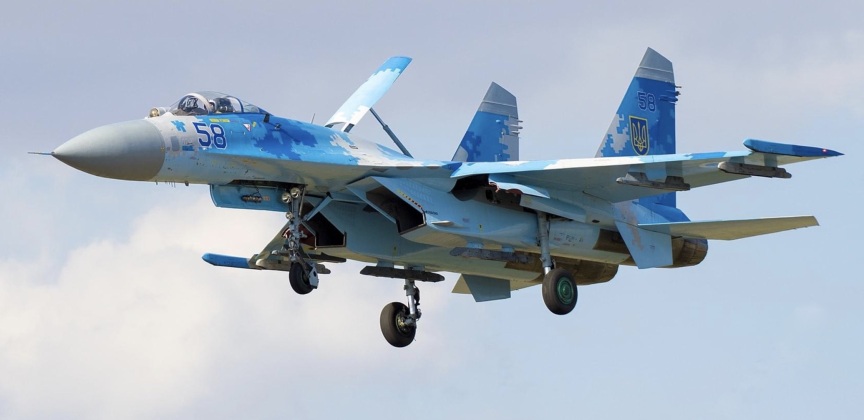News
Ukraine’s Su-27s Are Still in the Fight: Flanker with American Rockets Just Went Head to Head with S-300V4 in Russian Airspace
Months after the Ukrainian Air Force’s fleet of Su-27 Flanker fighters were first presumed grounded, one of the aircraft integrating newly supplied American AGM-88 rockets reportedly led strikes on Russia’s Belgorod region where it was engaged by local air defence systems. The Su-27 is the most capable fighter class in the Ukrainian inventory, and was inherited after the disintegration of the Soviet Union in 1991 at a time when it was widely considered the world’s top fighter class for air to air engagements. Su-27s have reportedly taken heavy losses in air to air combat against Russian fighter units, with the age of their avionics, sensors and weapons leaving them in a poor position to counter modern Russian fighter classes such as the Su-35. The aircraft are still potentially viable for ground attack missions, however, with their high endurances allowing them to carry very large amounts of ordinance over long ranges.
As a heavyweight fighter the Su-27 has significantly higher maintenance requirements and than its lighter counterpart the MiG-29, and is less well suited to operating from short or makeshift runways, leaving Ukraine’s ability to keep the fleet operational in serious question. The fact that the MiG-29 is widely operated by NATO members, which have been able to provide large quantities of spare parts, was thought to be a further factor explaining why the Su-27 has played a much smaller role in the war, as well as the much larger numbers of MiG-29s Ukraine inherited from the USSR.

The Su-27 strike into Russian territory followed shelling of Russian population centres near its Ukrainian borders. The Flanker moved in at a very low altitude, but was engaged by Russian air defences with an S-300V4 system credited with shooting it down. The Flanker and an accompanying Ukrainian Air Force Su-24MR strike fighter were reportedly shot down at a 217km range – representing one of the longest ranged surface to air kills on record. The age of the Ukrainian jets’ electronic warfare systems was likely a significant factor in guaranteeing they would be vulnerable when engaging 21st century air defence systems, with the S-300V4 being one of the most advanced in the Russian arsenal and entering service in the 2010s even more recently than the more well known S-400 system.
The S-300V4 deploys two kinds of missiles capable of engaging targets at ranges of over 200km, including the 48N6DM with a 250km engagement range and the 40N6 with a 400km engagement range, both of which travel at speeds well over Mach 10 and can intercept hypersonic targets. The surface to air kills surpass the 150km range kill by a Belarus-based S-400 against a Su-27 over Kiev reported in March. The fact that Su-27s are still flying represents a signifiant failure in Russia’s ability to destroy Ukrainian airfields and logistics, although the fact that fighters have consistently taken heavy losses once airborne highlights Russia’s vast superiority in surface to air and air to air capabilities.












